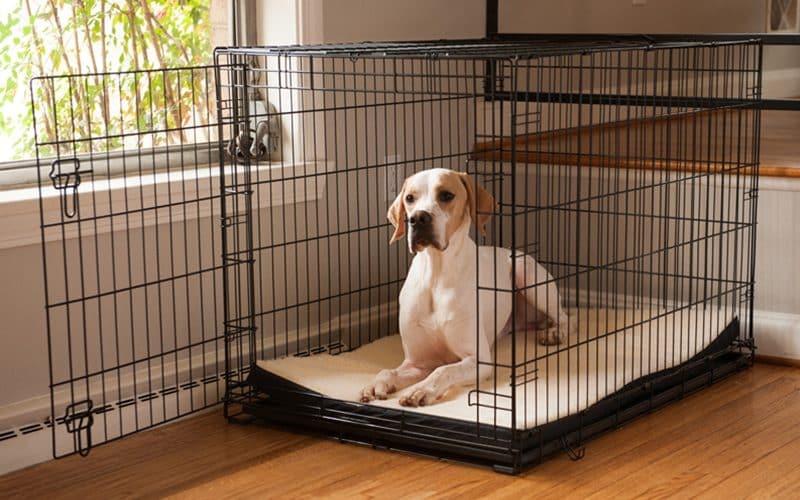A dog should not be in a crate for more than four hours at a time. It’s important to consider the dog’s age, size, and needs when determining the appropriate crate duration.
When training or using a crate for your dog, it’s important to understand the appropriate amount of time they should spend in it. Crate training helps with housebreaking, preventing destructive behavior, and providing a safe and comfortable space for your pet.
However, leaving a dog in a crate for too long can lead to discomfort and anxiety. Puppies should not be left in a crate for more than a couple of hours, as they have smaller bladders and higher energy levels. Adult dogs can typically tolerate longer crate times, but it’s important to still consider their physical and mental well-being. Ensuring that the crate is a positive and comfortable space for your dog is essential in maintaining their well-being while using it. Balancing crate time with exercise, mental stimulation, and social interaction is vital for a healthy and happy pup.
Importance Of Crate Training
Comfort and security: Crate training provides dogs with a cozy and secure space, mimicking a den-like environment which can help in reducing anxiety and stress.
Behavioral training: It aids in behavioral training by helping dogs learn control and discipline, as well as promoting good behavior, such as not chewing furniture or having accidents inside.
Safe confinement: Crates ensure the safety of both the dog and the household by preventing them from getting into hazardous situations or causing any damage when left unsupervised.
Guidelines For Crate Training
Sure, here is the HTML formatted content:When considering how long a dog should be in a crate, it’s important to follow certain guidelines for crate training. Selecting the right crate size is crucial, ensuring it’s large enough for the dog to stand up, turn around, and lie down comfortably. Introducing the crate gradually can help the dog acclimate to the new environment, while establishing a routine for crate time can make the experience more predictable and less stressful for the dog.
Duration Of Crate Time
Duration of Crate Time
Age-specific factors
When it comes to how long a dog should be in a crate, it’s important to consider age-specific factors. Puppies, for example, need more frequent potty breaks and balancing crate time and playtime is essential for their development. A gradual increase in duration is key for helping them adjust to being in a crate for longer periods of time. On the other hand, adult dogs can generally be crated for longer stretches, but it’s still important to ensure they get adequate exercise and mental stimulation. Monitoring their behavior and comfort levels while crated can help in determining the appropriate duration for each individual dog.

Credit: winnebagoanimals.org
Frequently Asked Questions On How Long Should A Dog Be In A Crate
Is It Ok To Crate Dog While At Work?
Yes, it is okay to crate a dog while at work to ensure their safety and prevent destructive behavior. However, it’s important to provide proper exercise and mental stimulation before and after crating. Always make sure the crate is comfortable and the dog has access to water.
How Long Is It Ok To Leave A Dog In A Crate?
It’s okay to leave a dog in a crate for 4-6 hours at a time, depending on their age and needs. Frequent bathroom breaks and proper exercise are crucial. Avoid leaving a dog in a crate for extended periods. Gradually increase crate time to help them adjust.
How Many Hours A Day Should A Dog Be In A Crate?
A dog should be in a crate for no more than 4-6 hours a day, depending on its age and needs. It’s important to gradually increase crate time and offer enrichment activities. Avoid leaving your dog in a crate for extended periods to prevent stress and anxiety.
When Should I Stop Crating My Dog?
You should stop crating your dog when they can be trusted not to chew or have accidents. Gradually increase their supervised freedom to avoid anxiety and misbehavior. Consistency and positive reinforcement are key to a successful transition.
Conclusion
The appropriate duration for a dog to spend in a crate depends on factors such as age, training, and individual needs. It’s important to consider the well-being and comfort of your pet when using a crate. By understanding and implementing recommended guidelines, you can ensure a positive experience for both you and your furry friend.


